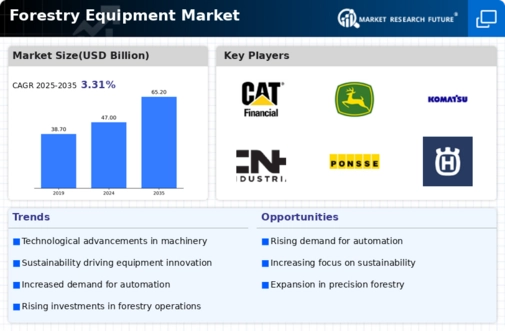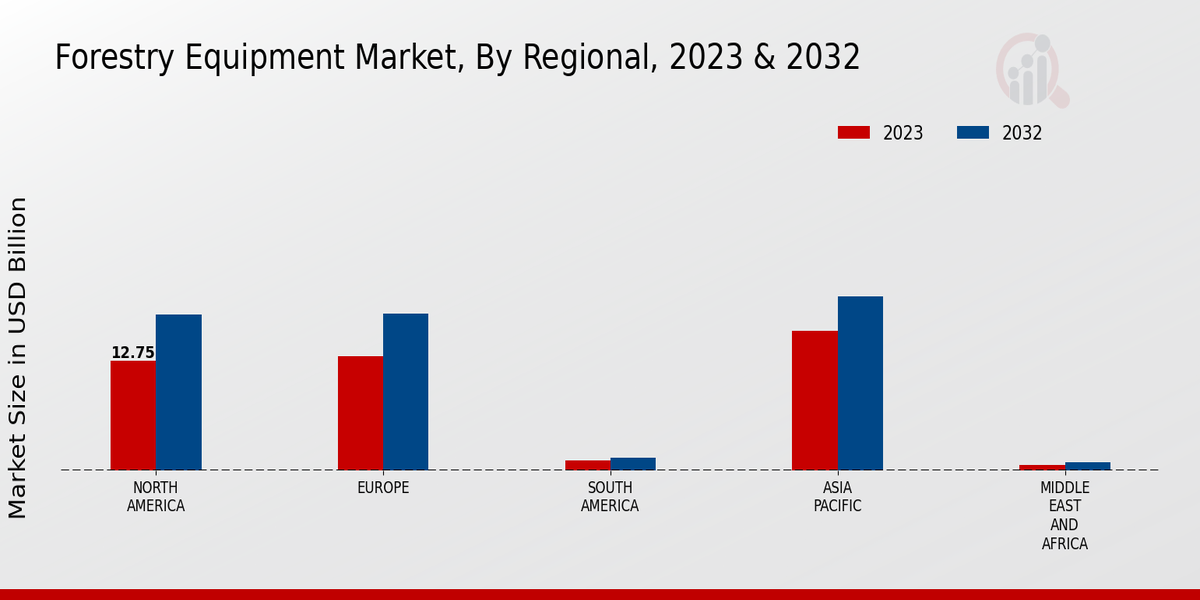Global Economic Growth
Global economic growth serves as a fundamental driver for the Global Forestry Equipment Market Industry. As economies expand, the demand for construction and infrastructure development increases, leading to a higher requirement for forestry products. This growth is particularly evident in developing regions, where urbanization and industrialization are accelerating. The increased investment in forestry operations to meet this demand necessitates advanced equipment, thereby driving market growth. The industry's trajectory appears promising, with projections indicating a market value of 65.2 USD Billion by 2035, reflecting the correlation between economic growth and forestry equipment demand.
Market Trends and Charts
Technological Advancements
Technological advancements play a pivotal role in shaping the Global Forestry Equipment Market Industry. Innovations such as automated machinery, drones, and GPS technology enhance operational efficiency and safety in forestry operations. These technologies enable precise monitoring of forest health and resource management, leading to better decision-making. For example, the integration of IoT in forestry equipment allows for real-time data collection and analysis, optimizing resource allocation. This trend is likely to contribute to the market's growth, with an anticipated increase to 65.2 USD Billion by 2035, indicating a robust demand for technologically advanced solutions.
Sustainable Forestry Practices
The Global Forestry Equipment Market Industry is increasingly driven by the adoption of sustainable forestry practices. Governments and organizations worldwide are promoting responsible forest management to combat deforestation and promote biodiversity. This shift necessitates advanced forestry equipment that minimizes environmental impact while maximizing efficiency. For instance, the use of precision forestry tools and machinery that reduce soil compaction is gaining traction. As a result, the market is expected to grow significantly, with projections indicating a value of 47.0 USD Billion in 2024, reflecting the industry's commitment to sustainability.
Government Regulations and Support
Government regulations and support are crucial drivers of the Global Forestry Equipment Market Industry. Many countries are implementing policies that encourage sustainable forestry practices and the use of advanced equipment. These regulations often include incentives for adopting eco-friendly technologies and practices, which can lead to increased efficiency and reduced environmental impact. For example, subsidies for purchasing modern forestry machinery can stimulate market growth. As governments prioritize sustainable development, the demand for compliant and efficient forestry equipment is likely to rise, further propelling the market's expansion.
Rising Demand for Timber and Wood Products
The Global Forestry Equipment Market Industry is significantly influenced by the rising demand for timber and wood products. As global populations grow and urbanization accelerates, the need for construction materials and sustainable products increases. This surge in demand necessitates efficient forestry operations, driving investments in advanced equipment. For instance, the construction sector's expansion in emerging economies is propelling the need for high-quality timber, which in turn fuels the forestry equipment market. The industry is projected to experience a compound annual growth rate of 3.01% from 2025 to 2035, reflecting the ongoing demand for timber.

















